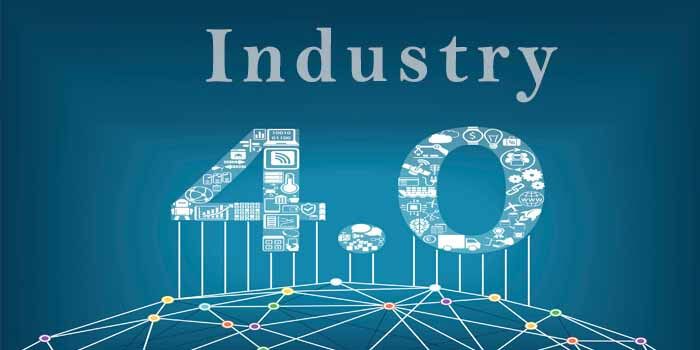The Industrial Revolution of the late 18th century was a ‘game changer’. Before it rolled out, people everywhere relied on medieval methods of commerce. Bartering (a good in exchange for another) was still commonplace. Banks weren’t developed much. And businesses took forever to produce a single product. The Wikipedia page on the subject, accessible with a Cox internet plan, explains this. In a great deal of detail, as it were.
A Word on the Successive Industrial Revolutions
With the revolution, steam and water engines came into common usage. They made fast transportation a reality. Factory production lines became more efficient as a result. This increased the volume of goods-production. Which, of course, meant more revenues and profits.
The second industrial revolution came with the introduction of electricity. This further sped up factory production rates. Causing global capitalism to take over in full swing. In historical terms, this was the start of the 20th century. Later, the weapons development & distribution profile of the World Wars became important. This production shift had a lot to do with realizing it.
The latter half of the cold war period saw the emergence of the third revolution. This was the time when computer systems, and later the internet, arrived on the scene. E-commerce became a reality. With businesses taking to the web to connect with their customers. Large MNCs started exerting their muscle. And entire governments bowed down to their influence.
What is Industry 4.0?
Many business experts see Industry 4.0 as a continuation of this cycle. But others, particularly in manufacturing, fancy it as something different. They base their assessments on such concepts as:
- ‘The Internet of Things’
- ‘The Internet of Systems’
Nowadays, computers don’t only interact with their human controllers. They also communicate with each other. The goal of this increased networking, though, is the same. It centers on providing more data and value to the end-user. With the benefit of speed and more real-time accuracy.
The business applications of this ‘breakthrough’ are not hard to imagine. More data allows companies to come up with quick solutions. And it allows them to narrow-in on the areas where customers want better service. This identification, in turn, leads to more quality services delivery.
Read : How Benchmarking Help to Improve Business Visibility?
Businesses are Fast Catching Up
Businesses recognize the importance of Industry 4.0. They know that it can streamline their workflow. From the product/service planning (strategy) stage. The actual manufacturing phase. And onward to the customer delivery stage.
But currently, many of them face a problem. And this has a lot to do with their existing business models.
A business model, in a nutshell, explains the ‘operational mission’ of a company. It details how a product or service line will develop. How customers will gain access to it. And how the business, in the end, will stand to profit & grow from the entire procedure.
Pretty basic stuff, but important. Because the complete life cycle of a business revolves around it.
The Need for New Business Models
Currently, most organizations have employees trained in their established business models. Some of the big Fortune 500 companies, in contrast, are diversifying their teams. They are taking new and multi-skilled workers on board.
People who have a flexible and adaptive approach. The kinds who can both hop on and disengage from the bandwagon. In as quick a manner as possible.
Industrial Applications
An Industry 4.0 approved business model can open up newer growth opportunities. For companies, these can prove key to surviving against their industrial competition. As well as resisting the onslaught of emerging start ups. Posed by small businesses that try to fit themselves within ignored market gaps.
In this case, the company that is the first to innovate ends up winning. Not only an initial monopoly in the market, but also a lot of sway on the consumer mindset. Something which every profit-making organization hopes to achieve.
Industry 4.0 tailored business models are also expected to be more cost-efficient. Machine networks, in sync with each other, deliver more meaningful data. This, as mentioned above, provides important clues into consumer behavior. As a result, it may be possible for businesses to adopt more precise pricing models. The kinds which charge a customer exactly in line with his (or her) use. But nothing extra.
Most customers would be more than willing to part with their money in such cases. Because they would take heart in knowing that they’re only paying as per their service use. In the long run, such customer engagements can help a company to scale.
Reduced production wastage is another expected benefit of this shift. Since machines will have a greater role in the manufacturing process. Human beings, due to their nature, have a tendency to splurge. When taken as a whole, their wasted material costs companies a lot of money. Robotic hands, as an example, can help to curb these losses. Thereby providing companies with the opportunity to shift their resources. Towards working on more profitable avenues.
The Coming Future
As a species, we are on the brink of a new world. One where process automation will completely transform how we do business. The rush for using the latest technologies will also fuel this trend. So competition will be on an all-time high. In this coming scenario, any business working on an old profit model will suffer. Unless it makes efforts to revise its working mechanisms.
At the moment, several U.S ISP companies have taken the initiative. Through such ventures as Optimum Offers and Verizon FiOS, they are expanding into 4.0 domain. Pretty soon, most industries will follow suit. Because the allure of massive profits is too hard to ignore.




